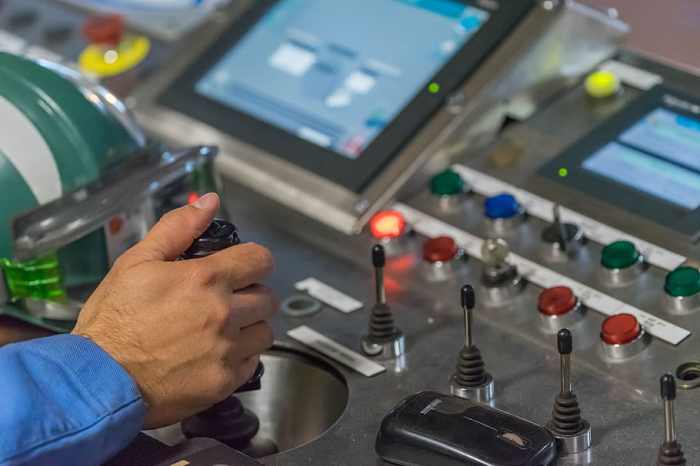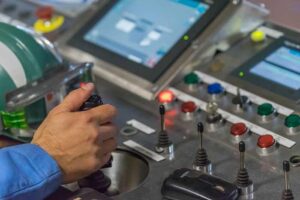
Automation in mechanical design is revolutionizing the way we approach engineering processes, bringing forth unprecedented levels of accuracy and efficiency.
By integrating advanced tools and software, designers can streamline workflows, minimize human error, and ultimately enhance the quality of their products. As industries evolve, understanding the role of automation becomes essential for staying competitive while also paving the way for innovation in the mechanical design field.
Automation in Mechanical Design
Automation plays a pivotal role in modern mechanical design, streamlining processes and enhancing productivity. It involves the use of technology to perform tasks that traditionally required human intervention, ultimately leading to more efficient workflows and improved design outcomes.The implementation of automation in mechanical design significantly impacts design accuracy and efficiency. By utilizing advanced software and tools, designers can minimize human error, allowing for precise modeling and simulations.
Automated design processes enable rapid iterations, which can drastically reduce the time required to finalize designs.
Role of Automation
Automation enhances the mechanical design process through various means, including:
- Increased design speed: Automation accelerates the design phase by allowing simultaneous modifications and faster computations.
- Improved accuracy: Automated algorithms reduce errors in calculations, leading to more reliable designs.
- Enhanced collaboration: Automation facilitates easier data sharing among team members, improving communication and efficiency.
Tools and Software
Several tools and software facilitate automation in mechanical design, such as:
- CAD Software: Tools like AutoCAD and SolidWorks automate drafting and modeling tasks.
- Simulation Software: Programs like Ansys and COMSOL Multiphysics automate testing and validation processes.
- PLM Systems: Product Lifecycle Management solutions such as PTC Windchill streamline product data management.
Customer Service
The integration of automation in customer service within mechanical design firms has proven beneficial in enhancing client interactions and satisfaction. Automated systems can handle inquiries and support requests, allowing human agents to focus on complex issues that require a personal touch.Automation improves customer service efficiency by providing rapid responses to common queries. Many engineering firms utilize chatbots and automated email responses to ensure clients receive timely information without delay.
Automated Customer Service Tools
Examples of automated tools used in customer service include:
- Chatbots: These AI-driven solutions provide 24/7 support, managing customer inquiries in real time.
- Help Desk Software: Platforms like Zendesk automate ticketing systems, ensuring issues are tracked and resolved efficiently.
- CRM Systems: Customer Relationship Management systems like Salesforce automate follow-ups and data management for better client interactions.
Balancing Automation and Personal Touch
While automation enhances efficiency, maintaining a personal connection with clients remains crucial. Striking the right balance involves:
- Using automation for routine tasks while ensuring human agents are available for complex issues.
- Personalizing automated communications to make clients feel valued.
- Regularly gathering feedback to improve both automated and personal service interactions.
Entrepreneurialism
Automation serves as a catalyst for entrepreneurial ventures within the mechanical design sector. By streamlining processes, entrepreneurs can focus on innovation and growth rather than repetitive tasks that drain resources.Startups leveraging automation often showcase how technology can enhance product development speed and market entry. For instance, companies utilizing automated rapid prototyping can reduce time-to-market significantly.
Case Studies
Several startups exemplify the successful integration of automation:
- Company X: This startup uses automated design software to cut product development time by 50%, allowing them to release products faster.
- Company Y: With an automated supply chain system, they can manage inventory levels efficiently, reducing operational costs.
Challenges for Entrepreneurs
Despite the benefits, entrepreneurs face several challenges when implementing automation:
- Initial investment costs for automation tools and systems can be high.
- Finding the right technology that aligns with business needs can be challenging.
- Resistance to change within teams may hinder successful implementation.
Business Ethics
The rise of automation in mechanical design raises several ethical concerns, particularly regarding job displacement. As automation replaces manual tasks, understanding its implications on the workforce is essential for maintaining ethical business practices.While automation can lead to increased efficiency and reduced costs, it also has the potential to disrupt employment within the industry. Companies must navigate these challenges while upholding ethical standards.
Ethical Implications
The use of automation brings forth important ethical considerations, including:
- Job Displacement: Increased automation may lead to job losses, raising concerns about workforce management.
- Fair Compensation: Businesses must consider how to fairly compensate those affected by automation.
- Transparency: Ethical practices demand clarity on how automation decisions are made and their impacts on employees.
Best Practices
To maintain ethical standards, companies can adopt several best practices:
- Engaging with employees to discuss automation impacts and solutions.
- Implementing retraining programs to help displaced workers transition to new roles.
- Ensuring that automation enhances workplace safety and does not compromise employee welfare.
Business Franchising
Automation can significantly benefit franchises operating within the mechanical design sector. By standardizing processes, franchises can ensure consistency and efficiency across multiple locations.Franchising in mechanical design can leverage automation to manage workflows, monitor quality, and maintain brand integrity.
Standardizing Processes

Methods for standardizing processes through automation include:
- Centralized software solutions that enforce uniform design protocols across franchises.
- Automated training modules that ensure all franchisees receive the same foundational knowledge.
- Performance monitoring systems that provide real-time data on franchise operations.
Successful Franchising Examples
Franchises that effectively utilize automation include:
- Franchise A: Uses automated inventory systems to keep track of supplies across all locations, reducing waste and ensuring availability.
- Franchise B: Implements standardized design software that allows all franchisees to produce consistent outputs, enhancing brand reputation.
Furnishings and Supplies
Automation plays a crucial role in the procurement process for mechanical design supplies, enabling firms to manage their resources effectively. Automated systems streamline ordering, tracking, and inventory management, which reduces lead times and enhances operational efficiency.Effective procurement automation can significantly improve the supply chain for design firms, ensuring that they have the right materials at the right time.
Automated Inventory Management
Examples of automated inventory management systems used in the industry include:
- ERP Systems: Enterprise Resource Planning systems like SAP automate order processing and inventory tracking.
- RFID Technology: Radio-Frequency Identification systems automate stock management and reduce human error.
- Cloud-Based Solutions: Tools like Fishbowl Inventory manage procurement processes efficiently from anywhere.
Streamlining the Supply Chain
Automation can streamline the supply chain for design firms by:
- Reducing manual input errors that can lead to delays and inefficiencies.
- Enhancing visibility into inventory levels and demand forecasting.
- Facilitating better communication with suppliers through automated ordering systems.
Human Resources
Automation in human resources management can greatly enhance the efficiency of mechanical design companies. It allows HR departments to focus on strategic initiatives rather than administrative tasks, improving overall workforce management.The benefits of automating HR processes include reduced recruitment timelines, improved employee onboarding, and more accurate personnel data management.
Benefits of HR Automation
Key benefits of automation in HR include:
- Streamlined Recruitment: Automated applicant tracking systems help HR teams manage candidates more effectively.
- Efficient Onboarding: Digital onboarding tools automate the paperwork and training process for new hires.
- Data Management: Automation ensures accurate and up-to-date employee records, enhancing decision-making.
HR Tools for Mechanical Design
Tools specific to automating HR functions in the mechanical design field include:
- Applicant Tracking Systems (ATS): Tools like Greenhouse streamline candidate management.
- Performance Management Software: Platforms that automate employee evaluations and feedback processes.
- Payroll Automation Tools: Solutions that ensure timely and accurate employee compensation.
Industrial Mechanical
Automation is transforming industrial mechanical processes, contributing to advancements in efficiency and production capabilities. It allows for higher precision and greater control over manufacturing operations.The relationship between automation and advancements in industrial machinery design is symbiotic, as each drives improvements in the other, leading to innovative solutions and enhanced productivity.
Transforming Industrial Processes
Automation is reshaping industrial mechanical processes by:
- Implementing robotics in manufacturing lines to increase production rates.
- Using predictive maintenance technologies to reduce downtime and maintenance costs.
- Integrating smart sensors to monitor and analyze machine performance in real time.
Examples of Automated Systems
Several examples illustrate the impact of automation in industrial mechanical applications:
- Automated Assembly Lines: Companies utilize robotics to assemble products with minimal human intervention.
- Smart Manufacturing: Facilities implement IoT devices to optimize production schedules and resource allocation.
Outcome Summary
In summary, automation in mechanical design is not just a trend but a vital element that shapes the future of engineering. It enables companies to optimize processes, improve customer service, and foster entrepreneurship while navigating the ethical landscape of automation. Embracing these advancements will undoubtedly lead to a more efficient and innovative mechanical design environment.
Common Queries
What are the main benefits of automation in mechanical design?
Automation enhances design accuracy, increases efficiency, and reduces the likelihood of human error.
What tools are commonly used for automation in this field?
Common tools include CAD software, PLM systems, and simulation software that support automated processes.
How does automation impact job roles in mechanical design?
While automation can streamline tasks, it may also require workers to adapt and acquire new skills to work alongside automated systems.
Can automation be implemented in small design firms?
Yes, small firms can leverage cost-effective automation tools to enhance their processes without needing extensive resources.
What ethical concerns arise from automation in mechanical design?
Concerns include potential job displacement and the need for responsible implementation practices to ensure fair treatment of workers.





